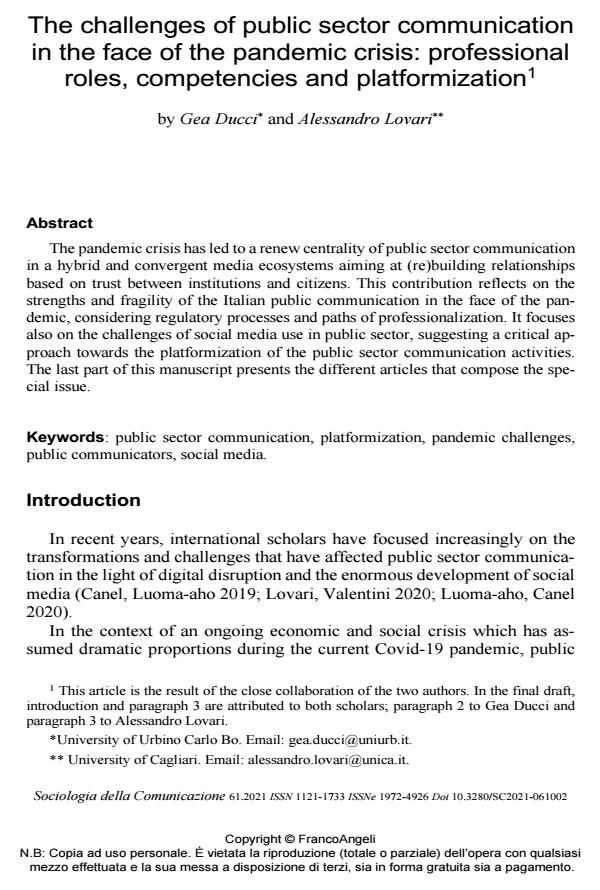The challenges of public sector communication in the face of the pandemic crisis: professional roles, competencies and platformization
Journal title SOCIOLOGIA DELLA COMUNICAZIONE
Author/s Gea Ducci, Alessandro Lovari
Publishing Year 2021 Issue 2021/61
Language English Pages 11 P. 9-19 File size 260 KB
DOI 10.3280/SC2021-061002
DOI is like a bar code for intellectual property: to have more infomation
click here
Below, you can see the article first page
If you want to buy this article in PDF format, you can do it, following the instructions to buy download credits

FrancoAngeli is member of Publishers International Linking Association, Inc (PILA), a not-for-profit association which run the CrossRef service enabling links to and from online scholarly content.
The pandemic crisis has led to a renew centrality of public sector communica-tion in a hybrid and convergent media ecosystems aiming at (re)building relation-ships based on trust between institutions and citizens. This contribution reflects on the strengths and fragility of the Italian public communication in the face of the pandemic, considering regulatory processes and paths of professionalization. It focuses also on the challenges of social media use in public sector, suggesting a critical approach towards the platformization of the public sector communication activities. The last part of this manuscript presents the different articles that com-pose the special issue.
Keywords: public sector communication, platformization, pandemic challenges, public communicators, social media.
- Infodemic Disorder Alessandro Lovari, Marinella Belluati, pp.65 (ISBN:978-3-031-13697-9)
- Exploring the Challenges of Generative AI on Public Sector Communication in Europe Alessandro Lovari, Fabrizio De Rosa, in Media and Communication 9644/2025
DOI: 10.17645/mac.9644
Gea Ducci, Alessandro Lovari, The challenges of public sector communication in the face of the pandemic crisis: professional roles, competencies and platformization in "SOCIOLOGIA DELLA COMUNICAZIONE " 61/2021, pp 9-19, DOI: 10.3280/SC2021-061002